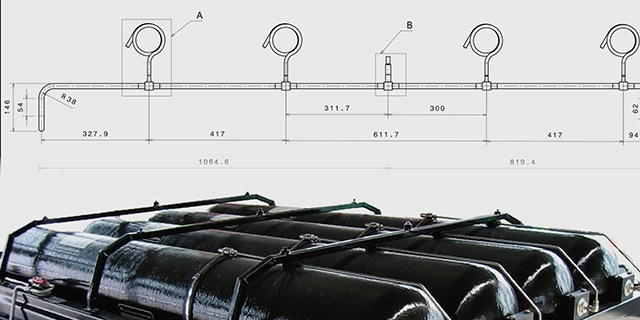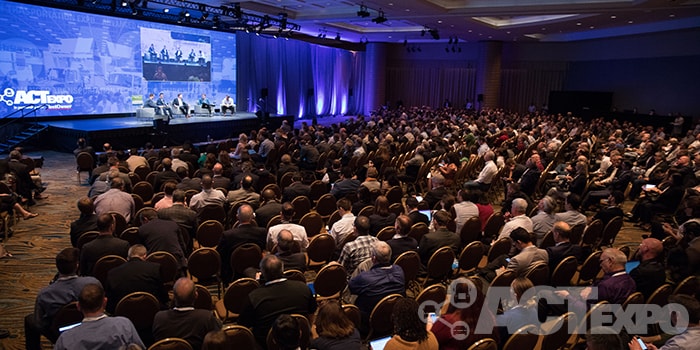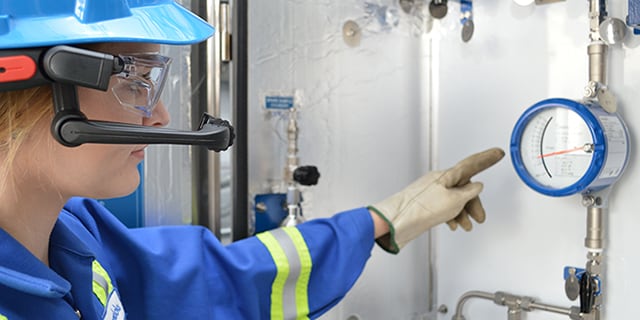Optimizing Component Selection for Hydrogen Fuel Cell Vehicles

Optimizing Component Selection for Hydrogen Fuel Cell Vehicles
Chuck Hayes, Principal Engineer
Around the world, significant investment is being made in hydrogen mobility and the infrastructure that makes it possible.
Why? As vehicle manufacturers seek to drive higher and higher efficiency and cut emissions, hydrogen fuel cell technology has become increasingly attractive. Hydrogen fuel cell vehicles utilize hydrogen gas and oxygen to create electricity in a fuel cell that powers an electric motor, delivering zero emissions operation, major horsepower, and the torque required for heavy-duty applications.
It is a promising technology and a market that is moving quickly and evolving rapidly. Governments and industry leaders are addressing the barriers to adoption and truly investing in the support and development of hydrogen transportation. From a component standpoint, we have been working to provide the right solutions for hydrogen fuel cell technology to meet its full potential, both within the vehicles themselves and as part of the burgeoning infrastructure that will be required for large-scale adoption.
There are several important considerations that must be made when selecting and specifying hydrogen componentry for reliable operation of vehicles and infrastructure. Here are a few things to keep in mind:
Material Selection Matters
Corrosion control is important in any application where tube fittings are concerned, but hydrogen containment poses a specific, unique challenge. Hydrogen embrittlement can impact 316 stainless steel, a widespread alloy type used for fittings, valves and tubing, including those commonly used in hydrogen vehicle architecture.
The phenomenon occurs, in part, because hydrogen is comprised of very small molecules—so small that hydrogen can move into cubic lattice network walls of the material, unpacking its molecular bonds and compromising the material’s integrity. In effect, hydrogen embrittlement may cause some grades of stainless steel to act more like cast iron: very brittle and susceptible to cracking.
As such, hydrogen infrastructure designers must pay careful attention to the composition of stainless steel. A higher concentration of chromium and nickel can defend against hydrogen embrittlement by promoting greater ductility and corrosion resistance. American Society for Testing and Materials (ASTM) requires a minimum of 10% nickel in 316 stainless steel formulations, but higher-quality 316 stainless with 12% minimum nickel is better-suited for the unique challenges of hydrogen. Swagelok uses stainless that has a minimum of 12% nickel.
Performance Under Pressure
Resistance against leaks is critical in any fluid system. But within hydrogen vehicles and infrastructure applications, there are some special considerations to be made in selecting and specifying types of componentry when making connections.
First, hydrogen storage is highly pressurized; the higher the pressure, the farther the vehicle range. Today’s hydrogen vehicles store the gas at either 350 bar or 700 bar (5,000 psi or 10,200 psi), depending on the needs of the application. Many short-range fleets, for example, utilize 350 bar (5,000 psi), knowing that each vehicle can return to a central hub every night for refueling. In longer-range applications like trucking, 700 bar (10,000 psi) provides a much longer range, where manufacturers are aiming for 400 miles (1,000 km). Higher pressures require higher performance components, and traditional options simply are not applicable.
Vibration resistance is critical too. While important in industrial applications, fittings and connections in hydrogen applications must be able to reliably withstand the repeated and constant vibrations associated with a moving vehicle. Cone and thread fittings, for example, are made manually. The quality of tube preparation can vary depending on the installer—and hydrogen is very unforgiving of imperfections. The tiny-molecule gas can escape through even the most miniscule spaces, and even the smallest leaks can become a major issue. Only advanced, consistent-fitting technology, such as Swagelok’s FK series, can provide the right performance.
Application-Specific Components
Across the entirety of the hydrogen transportation space, different vehicles have different design and component requirements. Consider municipal bus fleets, a prime area of opportunity for hydrogen fuel cell power. Because they have storage tanks on the roof, bus architecture requires some inherent flexibility versus long-haul vehicles; as such, reliable hoses that can handle 350 bar (5,000 psi) provide some flexibility instead of the rigidity of steel tubing.
Here, it is important that hose selection meets the right criteria. For the same reasons that high-performance 316 stainless-steel formulations should be considered for tubes and fittings in hydrogen applications across the board, polymer core hoses with metal over braid will not cut it in hydrogen buses. Designers should view hose selection with the same considerations, by choosing ones made with high-quality materials to handle a specific application.
Robust Support
In seeking to reach the potential that hydrogen transportation represents, designers and manufacturers should look to work with component suppliers with considerable, wide-ranging expertise in the hydrogen space.
Our teams have been working with gaseous systems, including hydrogen, throughout our organization’s history. Our expertise in component performance and materials science excellence, combined with robust, globally reaching service and support, can help manufacturers in the hydrogen transportation space seize new and growing opportunities everywhere.
Interested in learning more? Contact Swagelok today to learn how we can help build reliable hydrogen transportation vehicles and infrastructure.
Related Articles

Luxfer Hydrogen Fuel Cell Case Study
Swagelok’s spirit of collaboration and willingness to invest in an EC-79 certification enabled Luxfer to create fuel delivery systems to power 144 hydrogen fuel cell buses. Learn how Swagelok Manchester’s level of commitment drove innovation for Luxfer.

Meeting the Needs of Hydrogen Vehicles and Zero-Emissions Technology at ACT Expo
Clean transportation is important, and hydrogen vehicles require reliable infrastructure to become more viable and widespread.

Your Industrial Fluid System Safety Checklist
Follow these best practices to enhance the safety of your industrial fluid system.

